There are two different types of decorators – those who like to repair and repurpose furniture, and those who see a damaged chair or table and decide it’s time to replace it with something new.
But when it comes to reupholstering antique furniture, which approach is the most affordable? Is it cheaper to reupholster antique furniture or buy new? If you are experienced at decorating with antiques, you will know that it’s not unusual to come across furniture in need of a bit of TLC, but reupholstering can be an expensive endeavor.
Is it Cheaper to Reupholster Antique Furniture or Buy New?
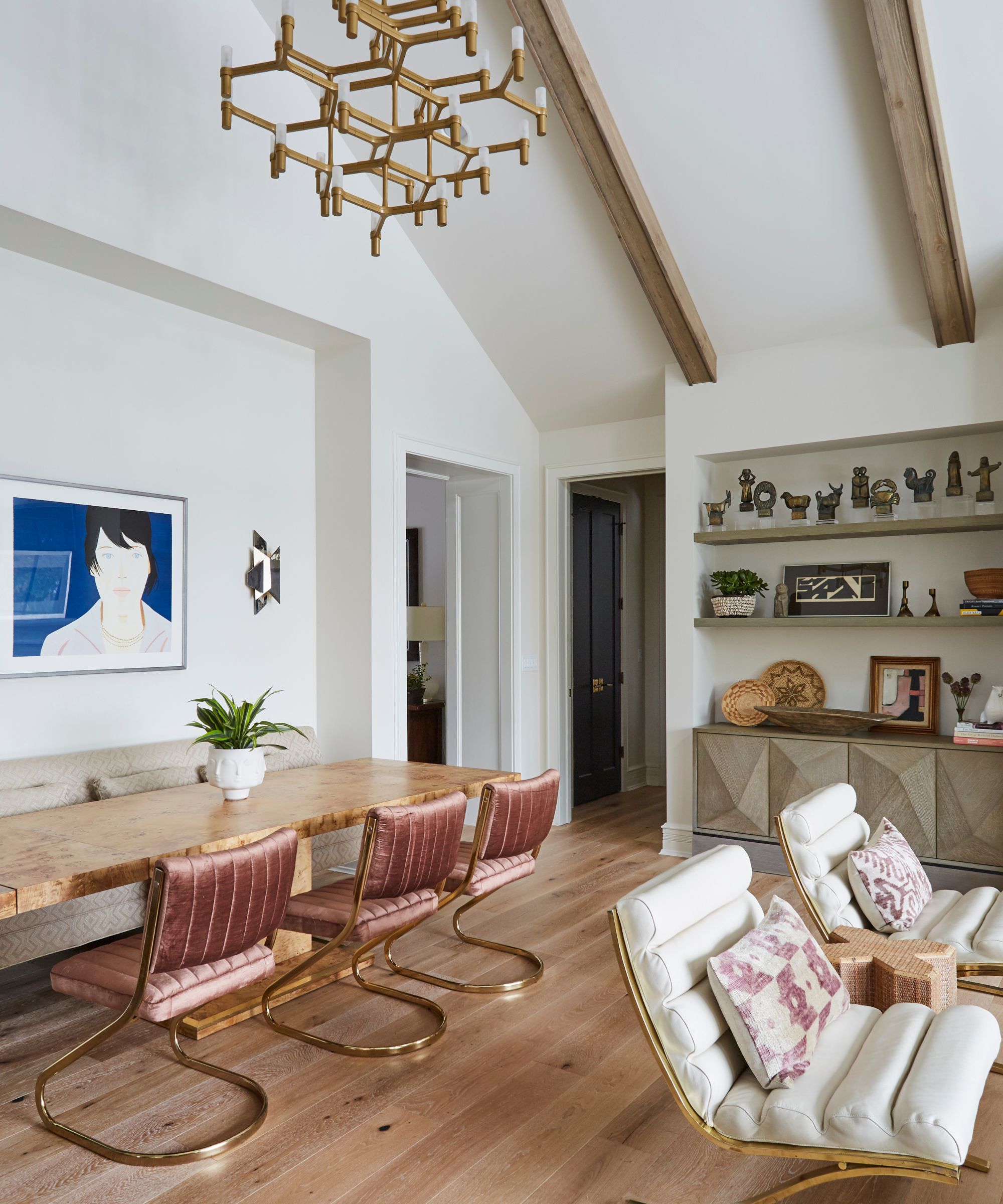
(Image credit: Imparfait Design Studio/Michael Alan Kaskel)
When it comes to whether reupholstering or buying new is more affordable, there’s no definitive answer. It depends on the cost of the upholstery fabric you choose and the size of the antique furniture.
Recovering an entire armchair will inevitably cost more than a seat cushion of an antique dining chair, for example, so you could be paying anything from a couple of hundred dollars right into the thousands. But more often than not, reupholstering does come at a slightly higher price point, as designers explain.
‘Depending on the quality of the antique and the fabric, I find it is typically less expensive to buy new rather than reupholster,’ says interior designer Shani Core, who has opted to reupholster several antique pieces in her designs.
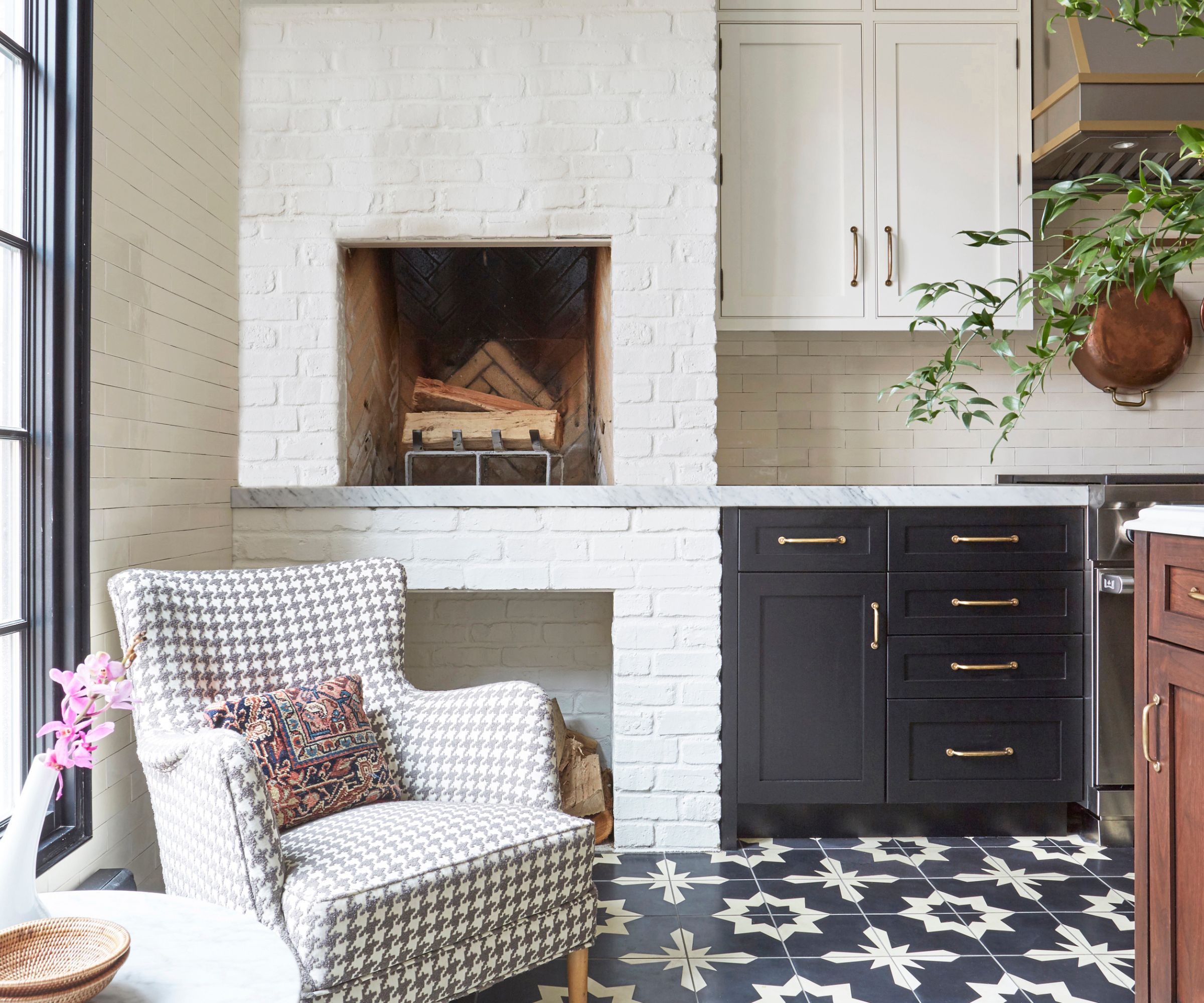
(Image credit: Imparfait Design Studio/Michael Alan Kaskel)
‘If I am going to take the time, expense, and effort to reupholster an antique, it must be of good quality. And then I am going to want to use a vibrant, fun, more modern fabric to bring the antique up to date, which all adds up.’
For more intricate pieces or traditional methods, you will need to source an expert in the field, which will also come at a higher cost, but a necessary one. The fabric is also a really important factor when reupholstering antique furniture. Choosing the right upholstery is key to the overall look of the piece, but also to how well it lasts and wears over time.
‘The cost will vary depending on what fabric you pick,’ adds Michael Glotzer, of The Hunt Vintage, which offers upholstered antiques and a reupholstery service. ‘Fabric can be $10 to $200 per yard, but I tend to use high-quality fabric in the $20 per yard range. Another thing to look into is performance fabric, which is fabric that can withstand stains and is cleanable.’

Lulu and Georgia
Striped Velvet Fabric by Sarah Sherman Samuel
You can’t go wrong with a classic stripe fabric, especially when it feels as luxurious as this velvet option by Sarah Sherman Samuel. Available in four colors, it’s the perfect classic fabric to give antique furniture a new lease of life.

Wayfair
Pennington 200 Upholstery Fabric
Plaid might be the pattern of the season, but it’s also incredibly timeless, making this an enduring fabric to upholster antiques, whether it’s a cozy armchair or a classic ottoman. There are seven color options for a personalized design.
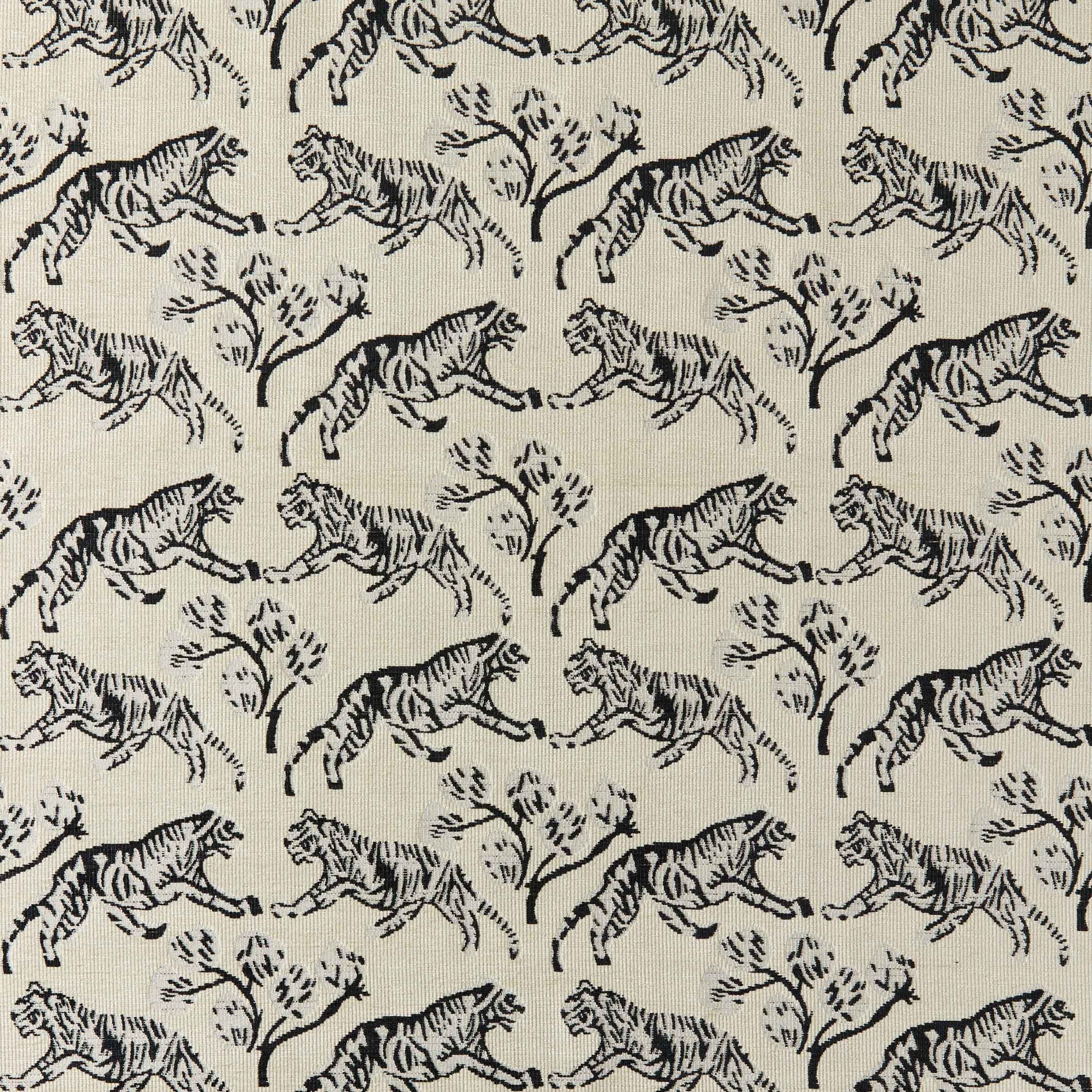
Lulu and Georgia
Tiger Jacquard Fabric by Sarah Sherman Samuel
For something unexpected, this tiger-print performance fabric is a chic option. Available in ivory and gold, it’s a bold way to blend old and new, giving antique furniture a more contemporary edge while still adding authentic character.
How to Tell if it’s Better to Reupholster and When an Antique is Beyond Repair
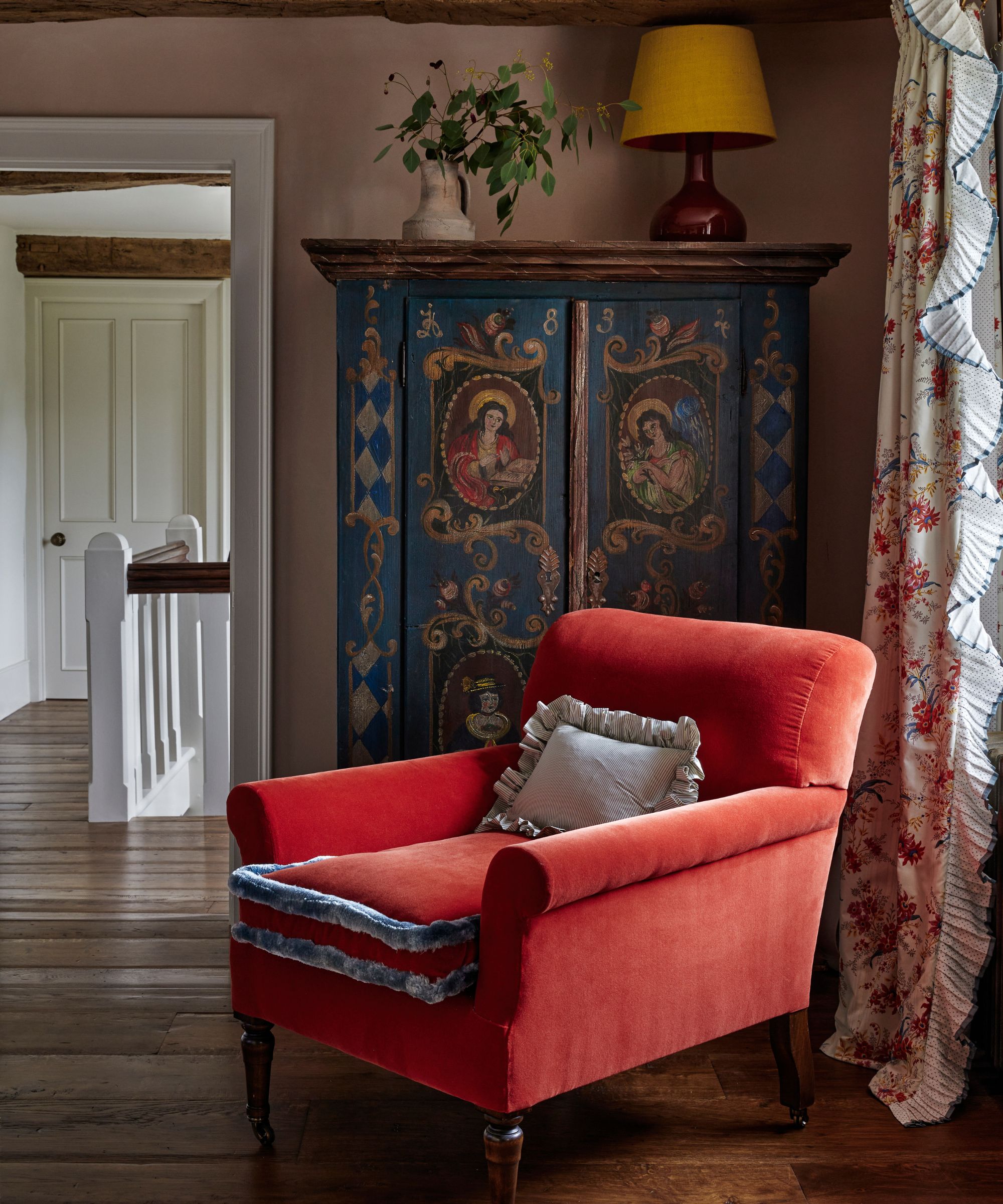
(Image credit: Future)
When considering reupholstering antique furniture, it’s essential to know how to recognize when it is fixable and when something is too damaged to be repaired. If you reupholster a chair or a sofa with irreparable damage to the structure, it’s going to be an expensive endeavor that inevitably ends up being a waste of time.
‘I would say any skilled upholstery shop can rescue any old piece unless it is damaged by termites (a rare occurrence) or has water or fire damage. Then I would suggest replacing it with a new piece of furniture,’ says Michael.
‘Antique chairs with fretwork, caning, or scratching can always be repaired and brought back to life, but when the hand-carved details of a wood leg have been chewed away by a dog, they are beyond repair,’ adds Shani, who explains that the structural integrity of the antique should always be considered first.
However, if the damage is purely aesthetic but can’t be saved, upholstery can be used to disguise it. ‘You may be able to add a skirt and change the whole look while hiding the damaged leg,’ she suggests.
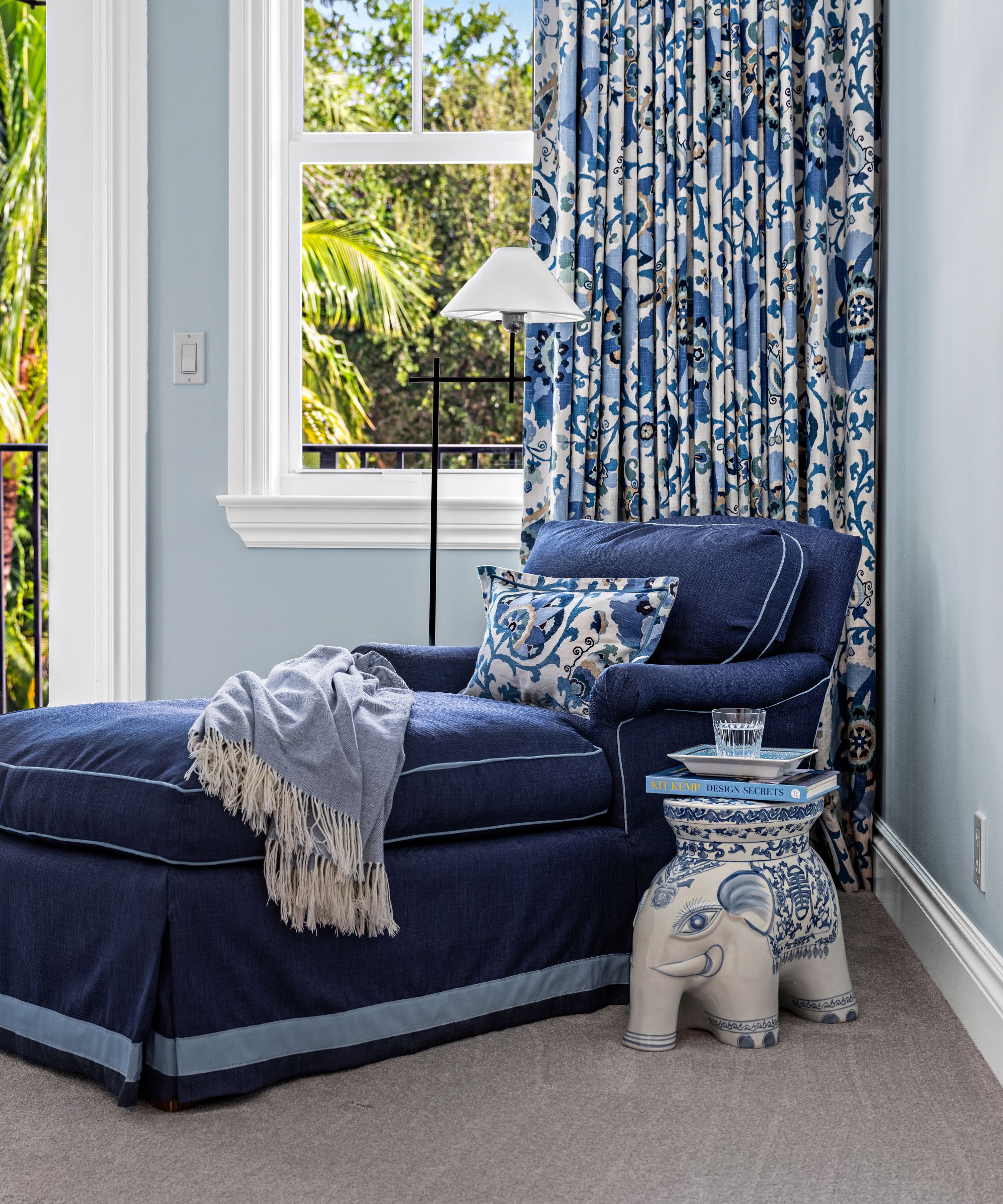
‘The navy chaise longue with blue ribbon detailing did not have the prettiest legs, so I created a floor-length skirt to hide them! And I had a new cushion made of down so it would be luxurious and comfortable for relaxing,’ explains Shani.
(Image credit: Shani Core Interiors)
The value and sentimentality of antique furniture also come into play when deciding whether or not it is worth the investment to reupholster. ‘You should think about whether the item you’re contemplating getting reupholstered is fundamentally a good quality piece of furniture or not,’ says interior designer Benji Lewis.
‘If, for example, you own an antique armchair or sofa made by Howard, then you’d be very lucky, and should absolutely consider getting it refurbished because it’s going to be an investment piece. That’s not to say it won’t cost you a bob or two, but even by looking at eBay you can see the value of a Howard piece,’ he explains, noting that names such as Gillows, James Shoolbred, and George Smith should also be saved.
‘After that, my take on things would be to weigh up how much you appreciate the piece you own based on sentimentality and come to a decision based on that,’ he says.
Is Reupholstering Antique Furniture Worth the Investment?
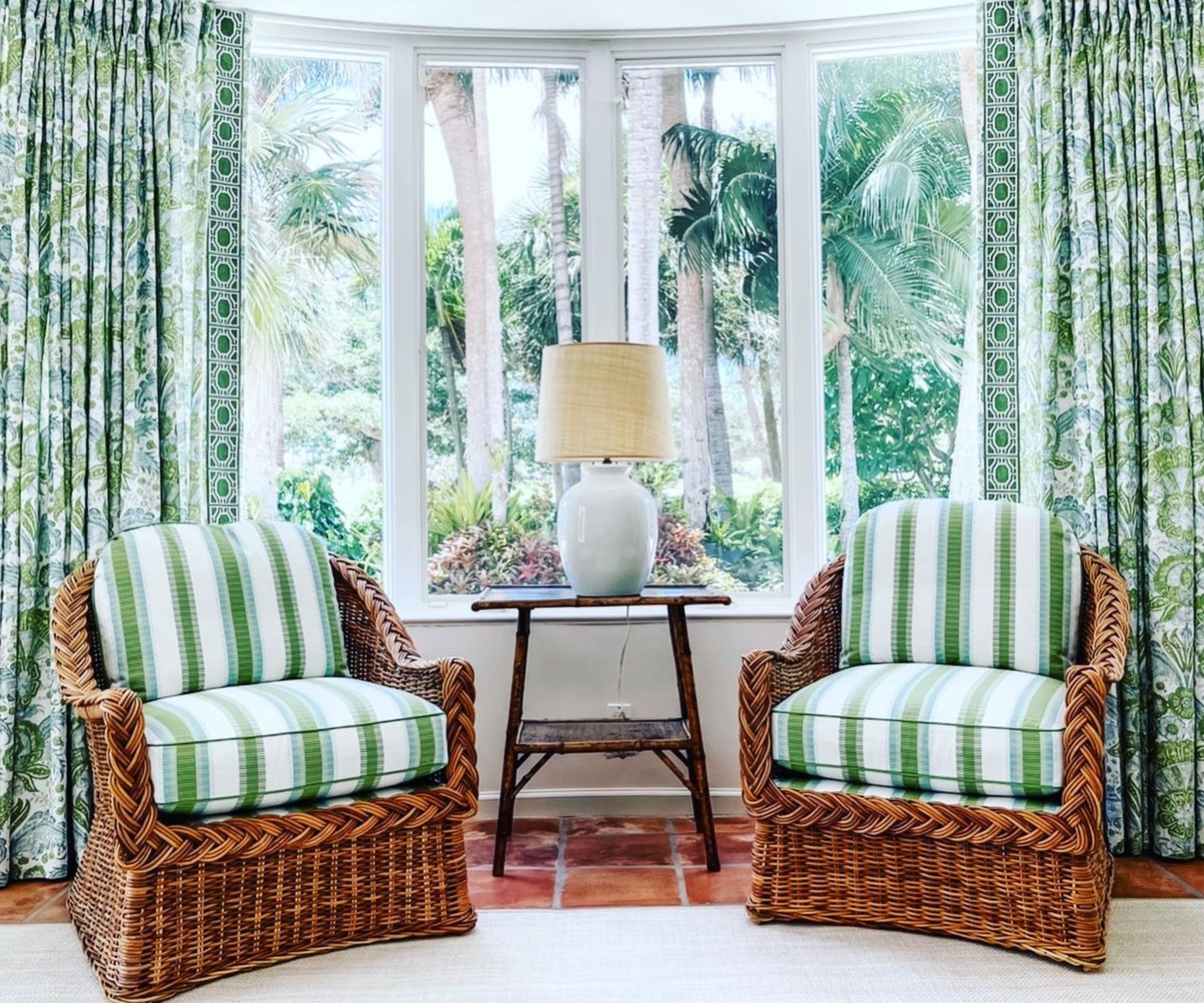
‘The green, aqua, and white rattan chairs had already been reupholstered several times, most recently in a red floral fabric. We updated them with a fresh performance fabric stripe with a contrasting welt in green, and now they will serve the owners for the next twenty years or more,’ says Shani.
(Image credit: Shani Core Interiors)
While the key consideration for most of us is whether it’s more affordable to reupholster antique furniture or buy a new piece, designers emphasize the importance of preserving these historical designs.
‘Reupholstering may end up being comparable in cost to buying new, but you’re getting something far more valuable: the ability to choose exactly the fabric you want, customize the cushion fill, and keep a well-made piece out of a landfill. I almost always vote to reupholster over new,’ says Rebekah Zaveloff, co-founder and creative director of Imparfait Design Studio.
‘Beyond the practical benefits of customization and quality, there’s the added value of preserving a piece with history and character. You’re investing in something with a story rather than contributing to disposable furniture culture,’ she adds.

(Image credit: Gieves Anderson / JAM)
There’s often sentiment and memories attached to furniture handed down through the generations, a feeling that simply cannot be replicated with contemporary finds. But there’s also a quality of craftsmanship to antique furniture that deserves to be preserved and treasured.
‘Almost anything can be fixed or restored – the frame, the springs, the structure. I have two Adrian Pearsall sofas I’ve reupholstered four times over 30 years, and they’re still going strong,’ explains Rebekah.
It’s also about sustainability. If you have the means to spend a little bit more reupholstering an antique rather than buying new, you can find joy in saving and reviving, rather than sending a beautiful piece to waste. ‘If you can rescue a family heirloom or save an old piece from a landfill, I’m always in support of that first,’ adds Michael.
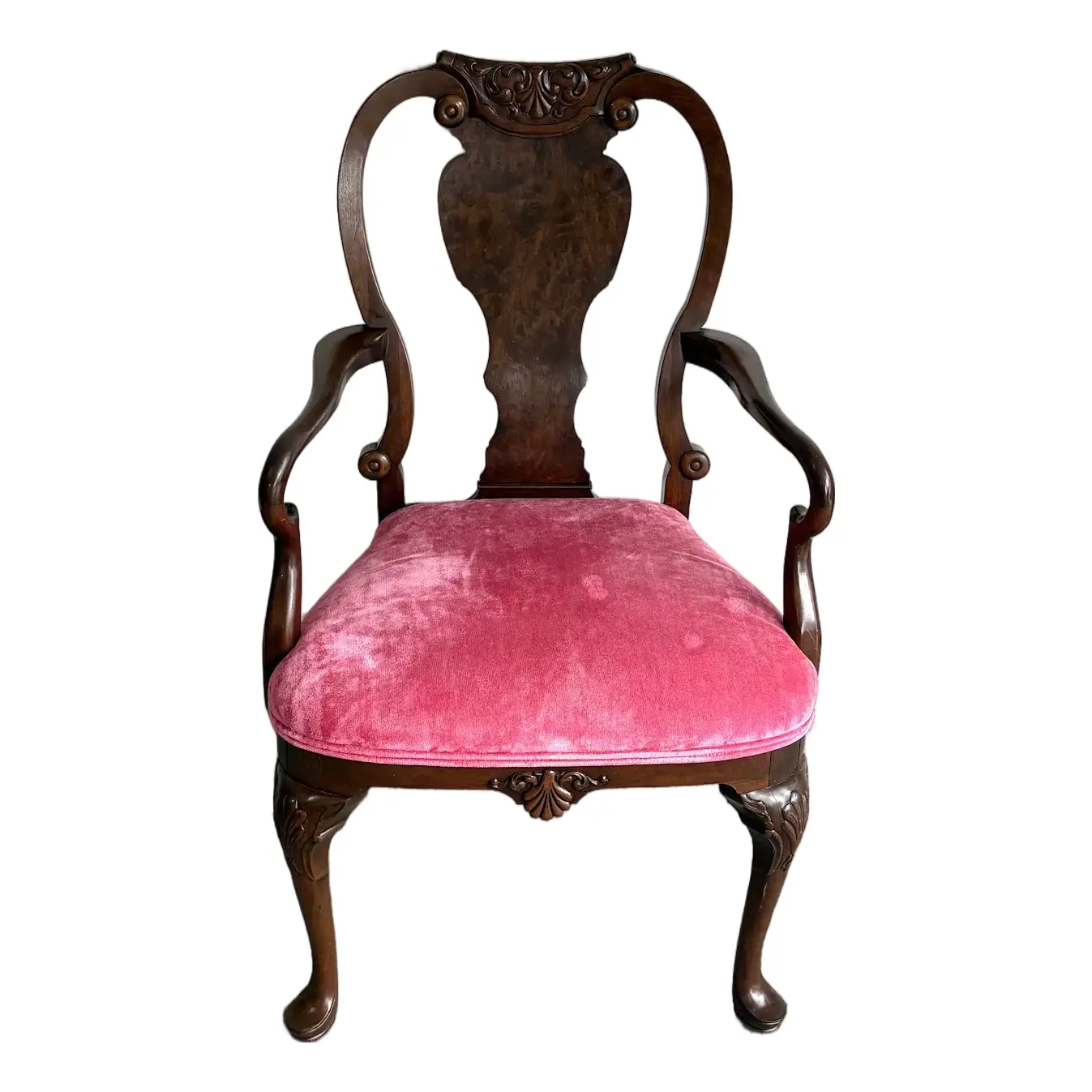
Chairish
Antique Burlwood Side Chair with a Pink Velvet Seat
They don’t make side chairs like they used to – this ornate burlwood design is a piece worth preserving, and with a new fabric on the seat, you can create something perfectly in keeping with your interiors.
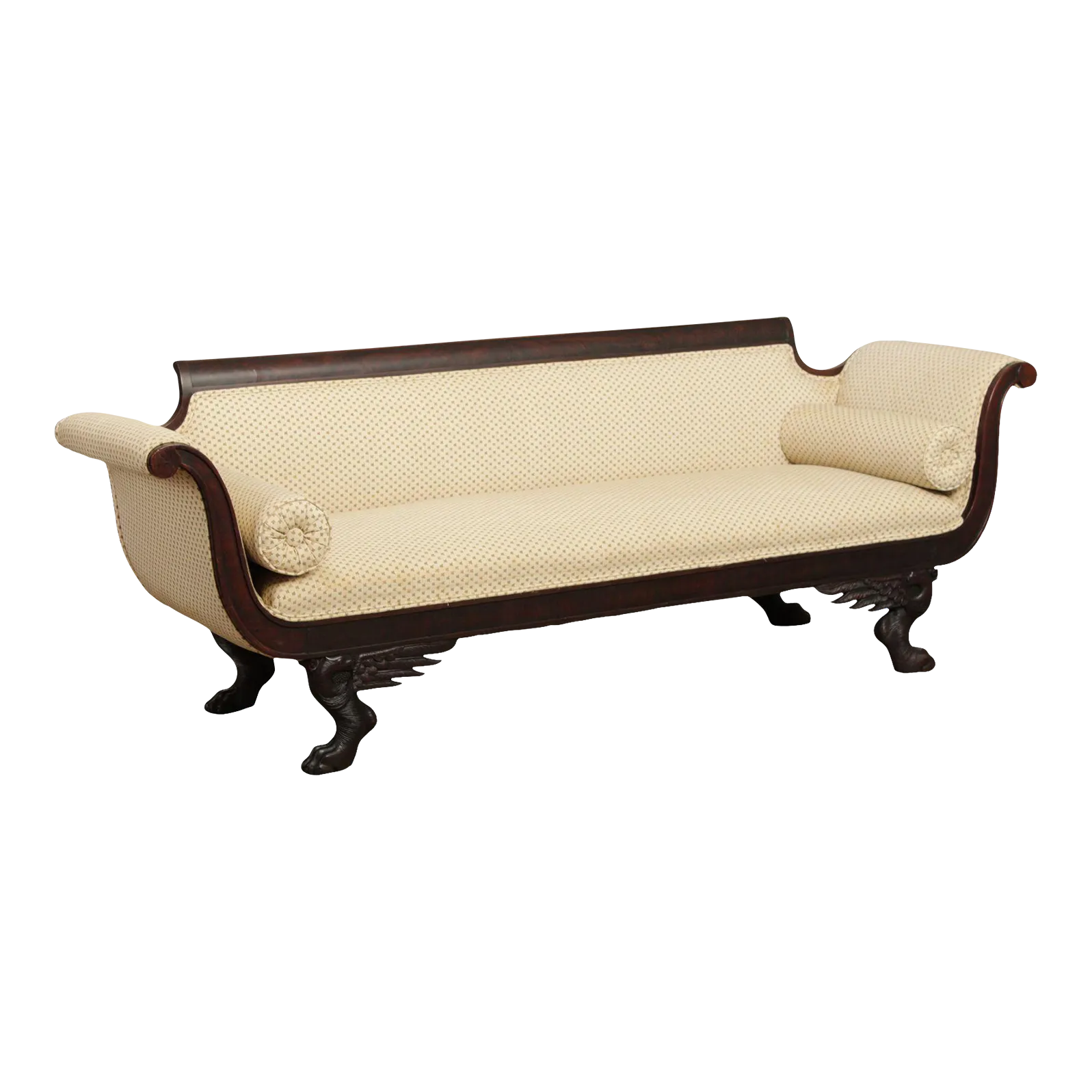
Chairish
Antique American Classical Empire Carved Mahogany Claw Foot Sofa
Antique sofas are becoming all the more popular in modern homes, creating an unexpected elegance in every style of home. This antique design is honestly quite beautiful as it is, but a playful fabric would create a bolder look.

Chairish
Antique French Chaise Tufted Upholstery Ready for Upholstery
There’s something that feels so luxurious about a chaise, especially in a dressing room. This is a beautiful antique example, a winner for neutral lovers, or the perfect base if you want to create an unexpected or more colorful look.
FAQs
How to Find Someone to Upholster Antique Furniture
It’s not always easy to find someone who is well-versed in upholstering antiques, but designers have a few tips and tricks to help you find a local craftsman to revive your prized pieces.
1. Check the quality of the antique
‘First, check the quality and make sure the piece is worthy of the time and expense it will take to reupholster. Then I always turn towards the fabric – you’ll need something to withstand the wear and tear of use,’ Shani advises.
2. Enquire with local upholstery shops
‘Check the work of your local upholstery shops. I would ask to see examples of their work and pay attention to the seams and the quality of their workmanship. Always turn the piece over and see how they finish the bottom! A good upholsterer will ensure the bottom is finished nicely as well,’ she adds.
It’s essential to ask plenty of questions – any professional will be accustomed to the questions and happy to provide full details and suggestions on the best approach for your specific antique design.
‘Find a reputable upholsterer who can assess the bones of the piece and walk you through what’s possible. Ask to see examples of their work, especially if your piece has any unusual details or requires structural repair. And don’t be afraid to take your time selecting fabric – it’s the most visible part of the investment,’ says Rebekah.
3. Do plenty of research and ask to see your upholsterer’s portfolio
‘Research your upholsterer and ask to see their portfolio; ask also questions about how they’d set about the re-upholstery work. I’d want to know about the type of springs they’d use, for example, and what kind of stuffing would go into the new seat and back. On an antique piece, for example, you want hand-tied coil springs, so ask about this,’ says Benji.
‘If you’re in the position of a Howard sofa and your upholsterer says they’ll use mid-century Z springs to reseat it, then step away; this isn’t the right person for the job because they’ll kill the value of your item. A mid-century sofa, however, would be fine to have its seat resprung with the Z’s,’ he explains.
4. Utilize social media
And finally, utilize social media. Many experts in the field share their services and projects online and will happily answer any questions and offer basic valuation through messages.
‘Instagram is a great resource to see local upholstery work, and then I would check Google reviews as well before narrowing down and visiting the final contenders in person. Pricing may also vary greatly, so you’ll want to get 2-3 quotes before making your final decision,’ Shani suggests.
What’s the Difference Between Recovering and Reupholstering?
There are different levels of restoring antique furniture, so it’s important to understand the different terms and services offered and what they actually include. ‘There’s a big difference between reupholstering and recovering an item,’ says Benji.
Recovering essentially means replacing the fabric of an antique chair or sofa. No other repairs of the furniture are included, so if it has a wobbly leg or worn-down seat padding, it will be returned to you in the same condition, just with a lovely new fabric over it.
Reupholstery is the next level of repair, as Benji explains: ‘Reupholstery really should entail repair work to a wobbly frame, re-springing the item, etc, and not just replacing the webbing and covering the piece with pretty fabric.’
The verdict? Buying new is usually cheaper than reupholstering antique furniture; however, if you have the budget to restore an heirloom piece, it’s always the favored option. It’s more sustainable and makes the most of the high-quality craftsmanship used to make them, something you don’t see quite as often in contemporary finds.
There are two types of decorators – those who enjoy repairing and repurposing furniture, and those who prefer to replace damaged furniture with something new.
When it comes to reupholstering antique furniture, the question of affordability arises. Is it cheaper to reupholster antique furniture or buy new? Experienced decorators know that it’s common to find antique furniture in need of some TLC, but reupholstering can be costly.
Is it Cheaper to Reupholster Antique Furniture or Buy New?

(Image credit: Imparfait Design Studio/Michael Alan Kaskel)
The affordability of reupholstering versus buying new furniture depends on factors like the cost of upholstery fabric and the size of the antique piece. Reupholstering an entire armchair may be more expensive than reupholstering just a seat cushion of a dining chair, resulting in costs ranging from a few hundred dollars to thousands. However, in most cases, reupholstering tends to be slightly pricier, according to designers.
‘Based on the quality of the antique and the fabric used, I often find it more cost-effective to purchase new furniture rather than reupholster,’ says interior designer Shani Core, who has reupholstered several antique pieces in her designs.

(Image credit: Imparfait Design Studio/Michael Alan Kaskel)
‘If I am going to take the time, expense, and effort to reupholster an antique, it must be of good quality. And then I am going to want to use a vibrant, fun, more modern fabric to bring the antique up to date, which all adds up.’
For more complex pieces or traditional methods, seeking an expert in the field is necessary, albeit at a higher cost. The choice of fabric is crucial when reupholstering antique furniture. Selecting the right upholstery fabric is essential not only for the piece’s appearance but also for its durability and longevity.
‘The cost will vary depending on the fabric you choose,’ explains Michael Glotzer of The Hunt Vintage, a provider of upholstered antiques and reupholstery services. ‘Fabrics can range from $10 to $200 per yard, but I prefer using high-quality fabric in the $20 per yard range. Additionally, consider using performance fabric, which is stain-resistant and easy to clean.’

Lulu and Georgia
Striped Velvet Fabric by Sarah Sherman Samuel
